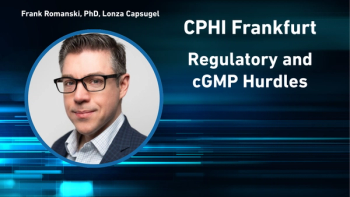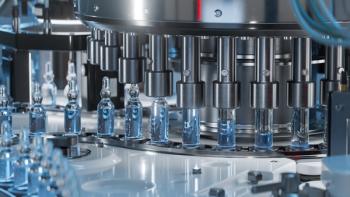
- Pharmaceutical Technology-03-02-2019
- Volume 43
- Issue 3
Europe Pushes for Global Easing of Generics Approvals
The European generics and biosimilars sector is working on the creation of a single pathway to accelerate development of and access to medicines.
Editor's Note: This article was published in Pharmaceutical Technology Europe's March 2019 print issue.
The European generics and biosimilars sector has been endeavouring, with the close support of its United States counterpart, to accelerate the creation of a single pathway for the global development of its products so that these treatments can be introduced more quickly both in the European market and elsewhere in the world. Although there has been progress in establishing a global regulatory system for generics and biosimilars, this progress remains fragmented with overburdened national licensing agencies doing much of the assessment work for the approval of off-patent products.
Among the major obstacles still to be overcome is the coolness among governments and their regulators-and even within parts of the industry-to the concept of global comparator products, which could act as references for marketing authorizations. Governments are worried that reliance on global comparators would result in a loss of control of a class of medicines, which in most countries account for the vast majority of drugs on their markets.
“Using a global comparator product for different regions around the world is mainly a political question,” Gerard Beuerle, senior director, global generic R&D, Teva Pharmaceuticals, told Medicines for Europe’s regulatory and scientific affairs conference in London on 1 February 2019 (1). Medicines for Europe is the region’s trade association for generic medicines and biosimilars producers.
Strong political support for change is needed in the EU member states and other European countries because legislation may have to be amended to allow international harmonization. At the same time, there will have to be close collaboration between regulators including a willingness to exchange information on existing comparators being used by agencies.
However, global regulatory initiatives such as single pathways in the development of generics and biosimilars would give patients greater access to affordable quality medicines. Hard pressed regulators would be able to process more quickly authorization applications because of less duplication and more efficient use of agency resources.
Closer co-operation between governments, regulators, and the industry is generating an international climate favourable to advances in the setting-up of a single development pathway.
International regulation of generics
The Geneva-based International Council for Harmonization (ICH), the main world body responsible for establishing uniform pharmaceutical standards, no longer exclusively deals with new drugs. During the past three years, ICH has broadened its scope to cover generics. It has also widened a membership predominantly consisting of representatives from Europe, North America, and Japan to include those from emerging economies in Latin America and Asia.
At its last assembly meeting at Charlotte, North Carolina, USA, in November 2018, ICH adopted a reflection paper on harmonizing of generic drugs standards (2). “Harmonization may allow developers to use data submitted in support of a generic drug marketing application to meet multiple jurisdictions’ regulatory requirements for marketing authorizations,” the paper says. “Harmonization may increase the size of the genericâdrugs markets and thereby attract more competition from (drug) developers.”
As a result of the adoption of the reflection paper, ICH is planning to set up in 2019 an informal generic drug discussion group (IGDG) that will recommend areas for harmonization. But the group will operate for only a year, after which ICH’s management committee will decide ‘whether additional work merits its continuation’.
Another source of collaboration is the International Pharmaceutical Regulators Programme (IPRP). This was created from the merger of the International Generic Drug Regulators Programme (IGDRP), which fostered collaboration among generic-drug regulators, and the International Pharmaceutical Regulators Forum (IPRF) that dealt mainly with patented medicines.
The World Health Organization (WHO) now exercises more influence over the international regulation of generics through its programme for assessing finished medicines and APIs, and quality control laboratories to qualify products for governments’ essential medicine procurement schemes around the world. The pre-qualification programme includes an appraisal of the competency of pharmaceutical regulatory agencies with those that are classified as meeting ‘stringent’ standards being entitled to take part in the project (3).
The use of stringent regulatory authorities (SRAs) provides a useful platform for ensuring that comparators are quality products, Deusdedit Mubangizi, co-ordinator of the WHO prequalification team, told the London meeting. One drawback was that SRAs accounted for only around a third of the world’s regulatory agencies and approximately 25–30% of the global population, he said.
The EU and US are among the global leaders in single pathway development. The EU has long experience in the use of reference products to harmonize procedures for the approval of generic medicines among its member states. The US Food and Drug Administration (FDA) was a major contributor to the ICH reflection paper by proposing means for harmonizing guidelines on scientific and technical standards for generic drugs.
The EU and US have now both built up a lot of experience in biosimilar medicines. “Sourcing of foreign reference products is in place without changing respective legislations (in the EU and US),” said Suzette Kox, secretary general of the Geneva-based International Generic and Biosimilars Medicines Association, at the conference (4). “Using a foreign comparator for biosimilar development is no limiting factor anymore for global development of biosimilar medicines.”
Global comparators: The biggest hurdle
Barriers to the introduction of global comparators remain the biggest hurdle to harmonization of generic medicines regulations because they are so closely linked to uniformity in bioequivalence standards.
“Harmonizing the requirement for performing bioequivalence studies (would be ineffective) if the study has to be repeated for every single country simply because the reference has to be a local comparator,” Alfredo Arieta, head of pharmacokinetics and generic medicines at the Spanish Agency of Medicines and Medical Devices (AEMPS), told the meeting, which devoted a whole session to the global comparator issue (5).
Arieta cited a study on comparators published in December in the Journal of Pharmacy & Pharmaceutical Sciences performed by himself and a team of regulators from 13 other agencies comprising FDA, Health Canada, Japan’s Pharmaceuticals and Medical Devices Agency, and agencies in Australia, New Zealand, Taiwan, Singapore, South Korea, South Africa, Brazil, Colombia, Mexico, and Switzerland (6).
“The acceptance of foreign comparator products is the most limiting factor for the development and regulatory assessment of generic medicines marketed globally,” the study said. But it concluded that “there is currently no consensus amongst regulators on the acceptability of foreign comparators.”
Most of the agencies are members of the Bioequivalence Working Group for Generics (BEWGG), which also includes the European Medicines Agency (EMA) and aims to promote, within the IPRP, greater collaboration and regulatory convergence. Currently, the agencies follow rules inconsistent with an internationally uniform approach to generics regulation. Some, for example, require bioequivalence studies to be performed with a local comparator while others accept studies based on foreign comparators but only under certain conditions.
“How can the comparators be different in each country if they were approved (as new drugs) in all the countries based on the same clinical development (evidence)?” Arieta asked at the meeting. He put much of the blame for the problem on restraints on exchange of information among regulators.
Due to the absence of legal agreements on information sharing, “regulatory agencies are unaware if the comparator product from other countries is the same product as their own comparator,” he said at the conference. In many cases, a potential flow of information between regulators is blocked by legislation. “Agencies are unable to use (exchanged) information for reasons of confidentiality and/or legal restrictions,” he explained.
Sharing information is a difficulty
Difficulties with exchanging scientific evidence between regulators is also considered to be a major barrier to harmonization of bioequivalence standards, said Beuerle. Lack of awareness about the scientific data on foreign comparators led at the local level to a lack of confidence in their bioavailability.
When bioequivalence studies are based on a foreign comparator, the “generics might (be considered) not to be switchable with the local comparator or the local generics in case of products of chronic use,” explained Arieta at the meeting, adding that they might also be thought to be less efficacious or less safe. One result could be an inadvertent protection of local industry with governments thinking that they do not have to accept generics based on references from countries that do not accept their references.
Among the possible solutions Arieta proposed could be a mutual recognition of a generic medicine by regulators from different countries when the drug involves the same marketing authorization holder, has the same qualitative and quantitative compositions and specifications, and is manufactured in the same plant or with the same production processes.
Such a solution would gradually become more viable if consolidation in the generics industry continues with manufacturing taking place in large, centralized plants. “Increased capacity building facilitates standards harmonization,” Guido Rasi, EMA executive director, told the meeting (7).
However, the consolidation trend is also being accompanied by a growing number of small suppliers entering the market. It would provide only a partial solution to the difficulties with regulatory convergence.
References
1. G. Beuerle, “Bioequivalence Studies in the Context of Global Development: Challenges and Current Initiatives,” presentation at Regulatory and Scientific Affairs Conference, Medicines for Europe (London, UK 2019).
2. ICH, Further Opportunities for Harmonization of Standards for Generic Drugs, Reflection paper (Geneva, Switzerland 13 November 2018).
3. WHO, “
4. S.Kox, “Global Development for Generics/Complex Generics-Catching up with the Biosimilars Framework and Beyond,” presentation at Regulatory and Scientific Affairs Conference, Medicines for Europe (London, UK 2019).
5. A.G.Arieta, “Global Harmonization of Comparator Products,” presentation at Regulatory and Scientific Affairs Conference, Medicines for Europe (London, UK 2019).
6. A.G.Arieta et al., J. Pharm. Pharm. Sci. 22 (1) 28–36 (2019).
7. G. Rasi, “Globalization: European Medicines Agency’s Vision for the Next Five Years,” presentation at Regulatory and Scientific Affairs Conference, Medicines for Europe (London, UK 2019).
Article Details
Pharmaceutical Technology Europe
Vol. 31, No. 3
March 2019
Pages: 6–8
Citation
When referring to this article, please cite it as S. Milmo, "Europe Pushes for Global Easing of Generics Approvals," Pharmaceutical Technology Europe 31 (2) 2019.
Articles in this issue
almost 7 years ago
Tablet Press Refurbishment: Why and How?almost 7 years ago
Embracing the Digital Factory for Bio/Pharma Manufacturingalmost 7 years ago
Caught in a Conundrumalmost 7 years ago
Strategic Screening for Solubility Solutionsalmost 7 years ago
Monoplant: Advantages of a Dedicated Facilityalmost 7 years ago
Handle with Carealmost 7 years ago
Rising to the Challenge of Biologic Drug Formulationalmost 7 years ago
Can the Price Ever be Right?almost 7 years ago
Key Considerations in Stability TestingNewsletter
Get the essential updates shaping the future of pharma manufacturing and compliance—subscribe today to Pharmaceutical Technology and never miss a breakthrough.




